When studying food microbiology, it's essential to understand the growth patterns of bacteria, especially if you identify them as Gram-negative bacilli. A significant differentiation is whether they are aerobic bacteria or facultative anaerobic bacteria. In this article, I will be breaking down this relationship between bacterial growth and oxygen. We'll explore the glycolytic pathway, the citric acid cycle (or TCA cycle), and the electron transport chain. Additionally, I'll explain what aerobic bacteria, facultative anaerobic bacteria, and obligate anaerobic bacteria are.
Key Distinctions for Gram-Negative Bacteria: Aerobic vs. Facultative Anaerobic
Microbiology textbooks typically categorize bacteria as:
- Aerobic bacteria
- Facultative anaerobic bacteria
- Obligate anaerobic bacteria
Note: Apart from these three categories, there's also a group called microaerophilic bacteria. For more details on this, check out articles related to Campylobacter.
Aerobic bacteria are those that require oxygen for their growth. With the presence of oxygen, they utilize the citric acid cycle (also known as the TCA or Krebs cycle) to generate a significant amount of energy (38 ATP) and proliferate extensively.
Facultative anaerobic bacteria can grow in both the presence and absence of oxygen. When oxygen is present, they actively produce energy through the citric acid cycle and multiply extensively. Without oxygen, they rely only on the glycolytic pathway, which doesn't fully break down organic matter. Instead, organic acids accumulate as by-products. Under anaerobic conditions, these bacteria generate much less energy (2 ATP) but can still reproduce.
Obligate anaerobic bacteria thrive without oxygen. The presence of oxygen can be harmful, leading to their slow death. We will explore the metabolic functions of these bacteria later on.
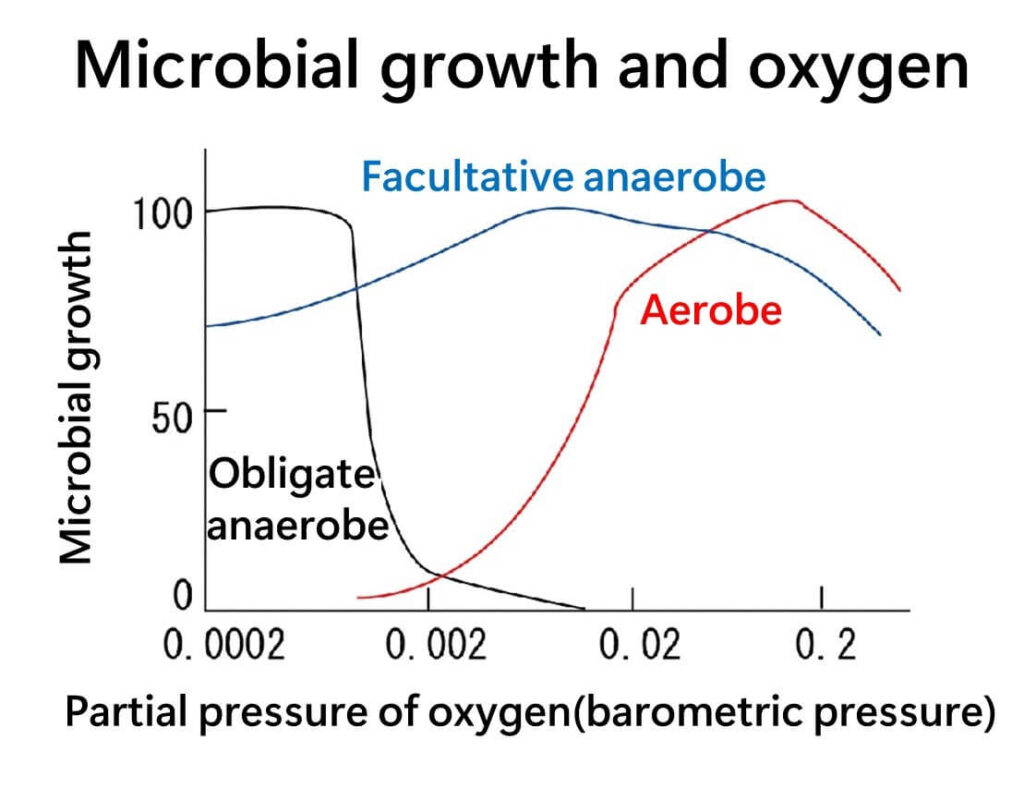
When dealing with isolated Gram-negative bacteria, the primary determination to be made is whether they are aerobic or facultative anaerobic.
In food microbiology, the OF test serves as a convenient method to differentiate between aerobic and facultative anaerobic Gram-negative bacteria.
For more information on what the OF test is, click below.
Sorting Out Gram-Negative Bacteria in Food Microbiology: The Oxidation Fermentation Test (OF Test)
In Food Microbiology, Obligate Anaerobic Gram-Negative Bacteria Are Virtually Non-existent
Here's an important point: in the realm of food microbiology, when considering Gram-negative bacteria, obligate anaerobes are almost never encountered. The significance of obligate anaerobic bacteria primarily involves Gram-positive bacteria.
Why don't we find obligate anaerobic Gram-negative bacteria in food microbiology?
Think about it this way: obligate anaerobes can't survive in oxygen-rich environments. Yet, most food products, at some stage, come into contact with oxygen. Even vacuum-sealed or canned foods are exposed to oxygen during their processing stages. Thus, obligate anaerobes rarely appear in food.
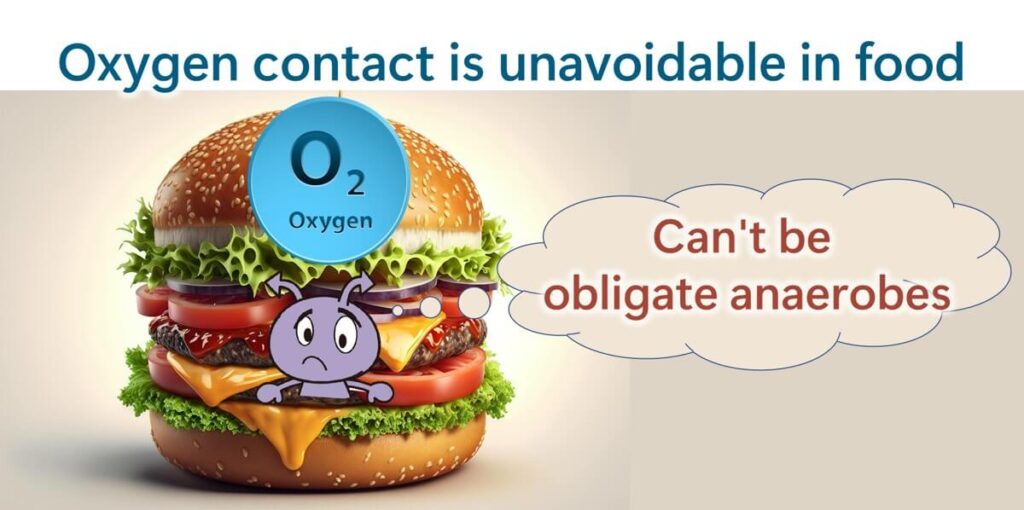
Certainly, there are bacteria like the Clostridium botulinum and Clostridium perfringens which are obligate anaerobes. They form spores and can exist in food. These spore-forming bacteria, as discussed in previous articles, only exist within Gram-positive bacteria.
While obligate anaerobic Gram-negative bacteria exist in the realm of microbiology, they typically appear in medical microbiology contexts and are restricted to pathogens that can transmit between humans.
So, for food microbiology purposes, it's safe to assume that you won't encounter obligate anaerobic Gram-negative bacteria.
What is Photosynthesis? And for heterotrophic bacteria, what is Respiration?
First, let's dive into the basics of what respiration is. Both microorganisms and humans are heterotrophic beings. On the other hand, plants are autotrophic beings. These autotrophs have the ability to harness solar energy. They combine carbon dioxide and water to create organic matter. Think of this like piecing together small blocks to form a larger structure. To stick each block together, we need glue. This "glue" is the energy from the sun. In essence, solar energy is converted into chemical energy to bind organic materials together.
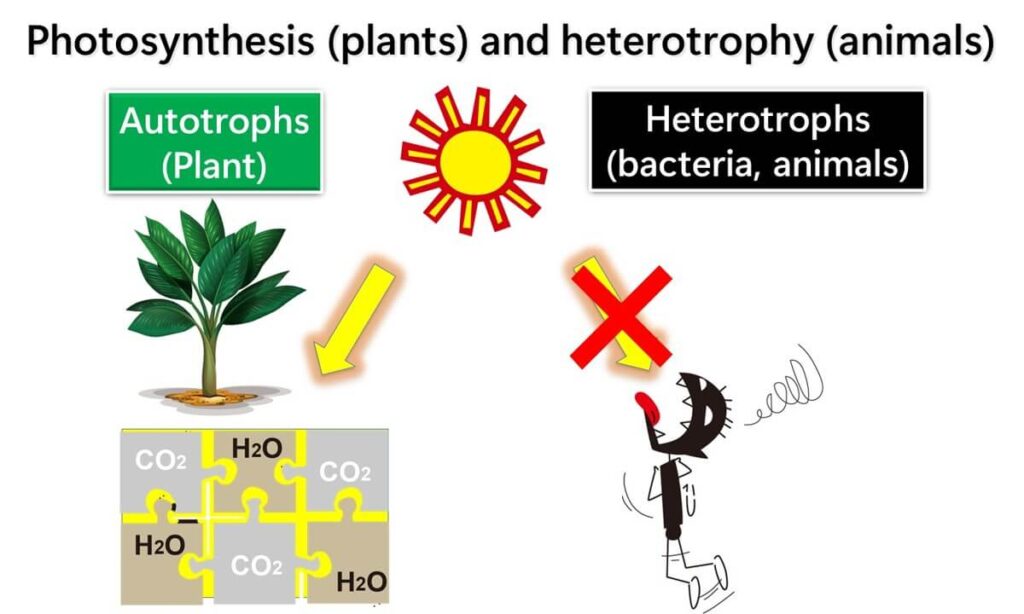
However, animals and bacteria can't fix solar energy, no matter how much we bask in the sun. Hence, us heterotrophs break down plants, harnessing the chemical energy they release. Both humans and bacteria act in the same way in this regard. In a way, we could call ourselves and bacteria the "losers" from ancient times since we didn't develop the innovative technology of photosynthesis. We're sort of a pitiable bunch, always trying to snatch energy by destroying plants.
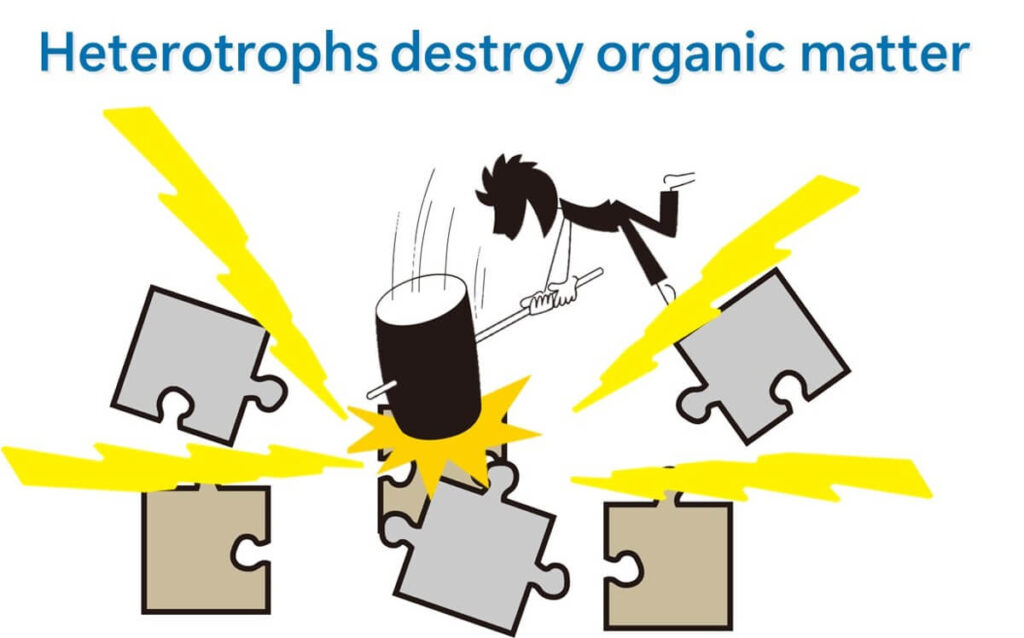
What is Glycolysis? And the Citric Acid Cycle? An Easy Explanation.
As we discussed above, respiration is the act of breaking down the organic matter created by plants through photosynthesis. It's about breaking down glucose, our source of energy, to harness the chemical energy inside.
During this process, the system that derives energy without oxygen is called glycolysis or fermentation. Some bacteria, known as facultative anaerobes, can survive just on glycolysis. In glycolysis, a 6-carbon sugar is broken down into organic acids or alcohols made up of 2 or 3 carbons. However, this system doesn't break it down to carbon dioxide, which has only 1 carbon. Glycolysis produces less energy compared to when we use the citric acid cycle (only 2 ATP). So, facultative anaerobes can derive a bit of energy just by partially breaking down organic matter, but they can't extract large amounts of energy.
On the other hand, through a process called respiration, organisms use oxygen (or other substances) to break down a 6-carbon glucose molecule all the way to a 1-carbon dioxide molecule, releasing a lot of energy. To fully break glucose down to carbon dioxide, a complex metabolic pathway called the citric acid cycle is needed. This method can produce over 10 times more energy compared to fermentation (38 ATP).
To make this easier to understand, let's use a simple analogy. Imagine 6 kids at Disneyland. If you ask them to group into threes or twos, they'll do it easily. Their bond isn't very strong. Think of these 6 kids as carbon atoms, where 6 of them together are glucose, 3 are lactic acid, and 2 are acetic acid. Converting glucose to lactic acid or acetic acid is relatively easy. However, the energy you get from this is minimal.
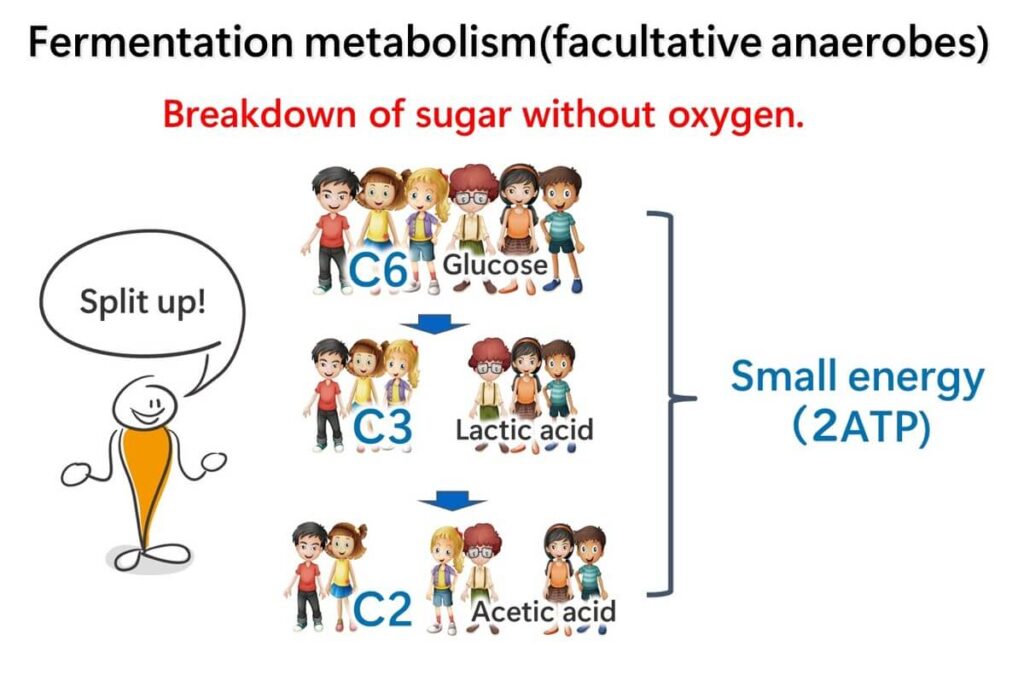
Now, if you ask two of these kids to split up and roam around Disneyland alone, they'll resist strongly. They might get lost, and it's not as fun alone. The bond holding these two kids is very strong. Translating this to carbons: breaking a 2-carbon molecule (acetic acid) to a 1-carbon molecule (carbon dioxide) is tough.
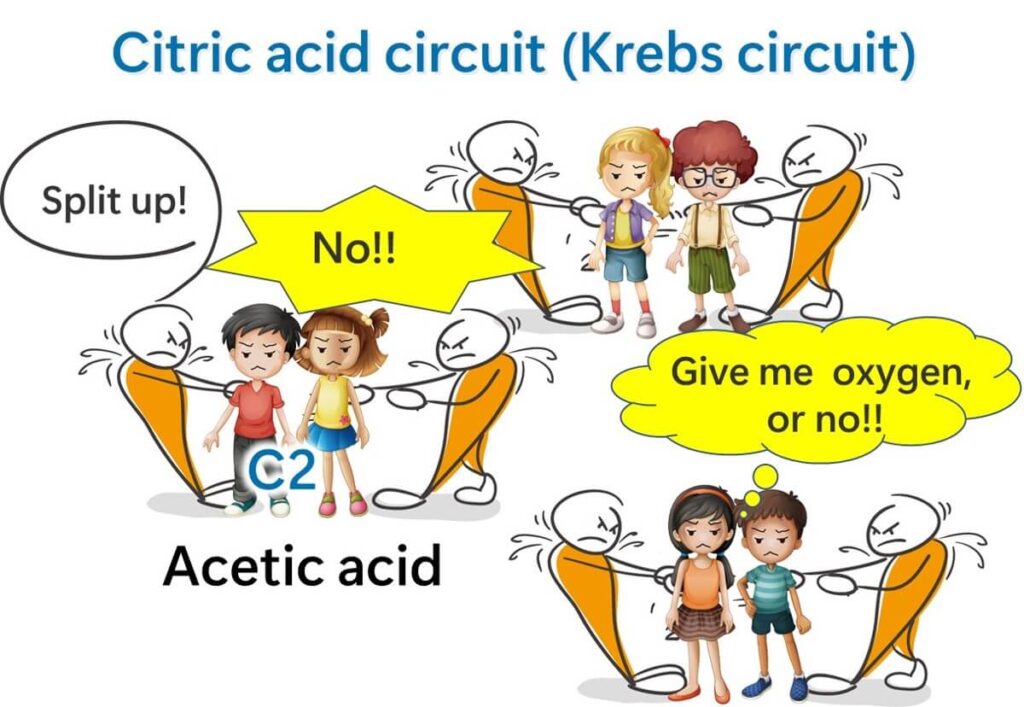
Now, what if we tempt these two kids with a thrilling ride on a roller coaster called the 'Citric Acid Cycle'? In our metaphor, the vehicle they'd board, the actual roller coaster track, represents oxaloacetate, which contains four carbon atoms.
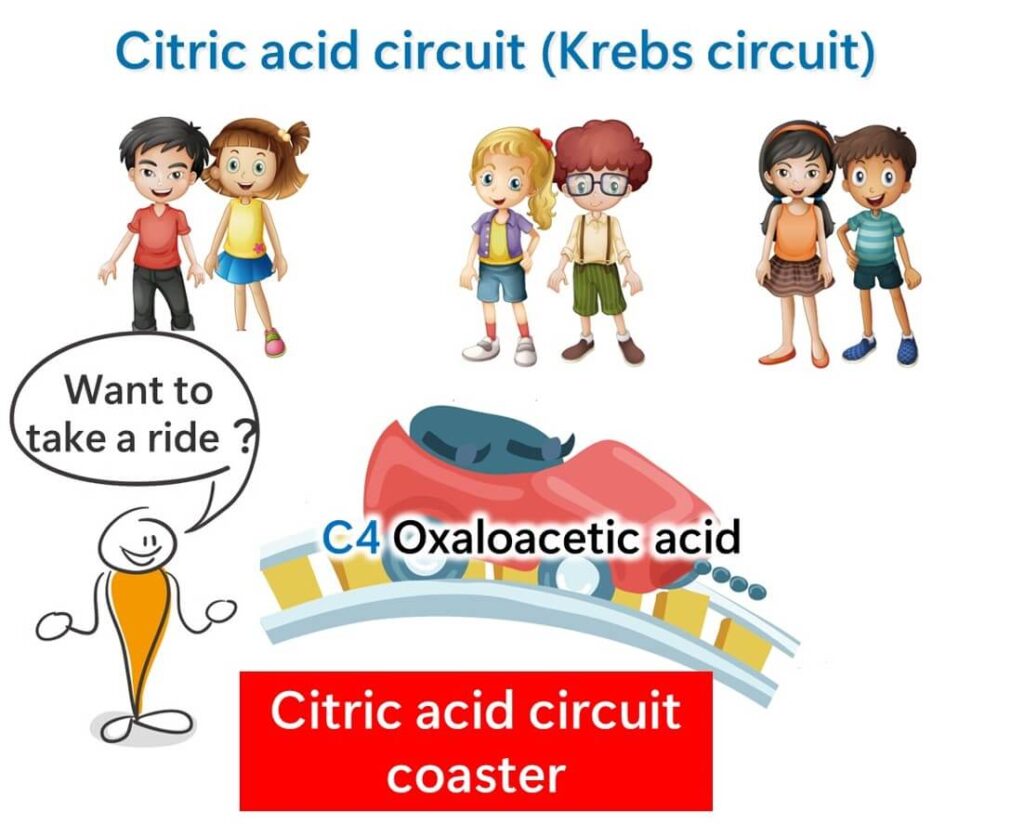
The children easily join the ride and have a great time going round and round on the Citric Acid Circuit. As they enjoy the ride, the energy that was previously holding them together is dissipated.
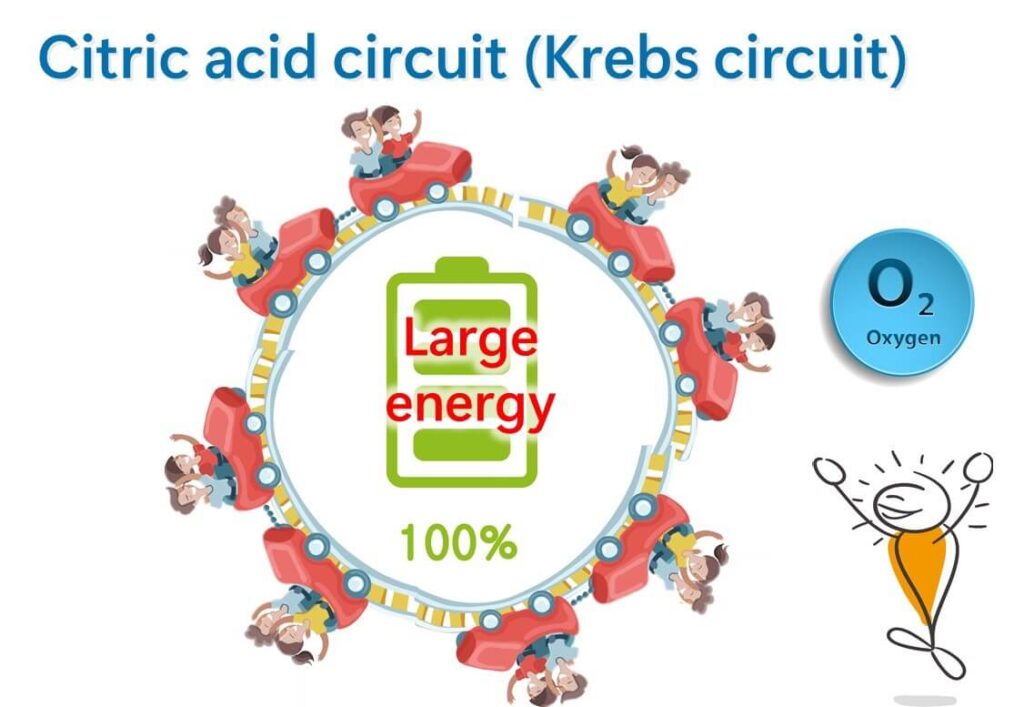
Once the two children have ridden the citric acid circuit roller coaster, the energy that held them together has been released, making it simpler to separate them into individual children. This process can be compared to the citric acid cycle, also known as the Krebs cycle or the TCA cycle.
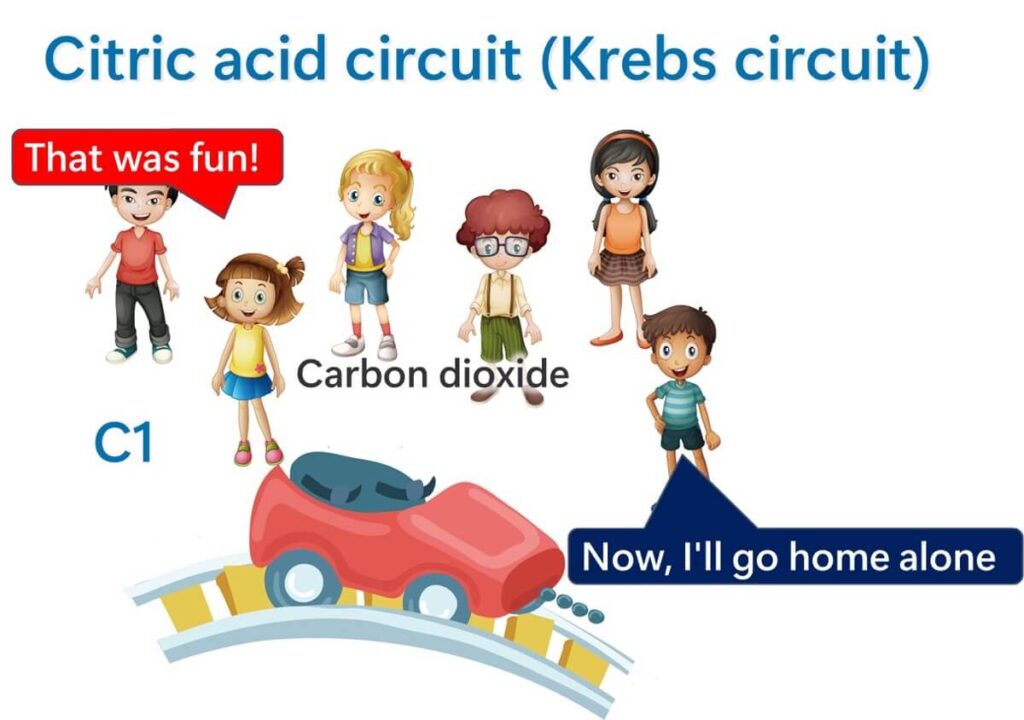
The roller coaster analogy helps explain the difference between fermentation and the Krebs cycle in terms of the energy produced from the breakdown of organic matter. It's important for beginners in food microbiology to grasp these concepts.
To wrap up: breaking a 6-carbon glucose molecule to a 3 or 2-carbon organic acid is relatively easy but yields less energy. Breaking a 2-carbon acetic acid to a 1-carbon dioxide molecule is tougher but releases a lot more energy. Understanding these basics is crucial.
The Link between Vacuum Packaging and the Growth of Facultative Anaerobes
When we talk about the growth of facultative anaerobes in vacuum-packaged foods, it's important to fully grasp the concept. Let's imagine we inoculate a petri dish with E. coli bacteria. We leave one dish exposed to the air and vacuum pack the other. After cultivation, we observe their growth.
If we simply go by the textbook understanding that "facultative anaerobes can grow with or without oxygen," one might mistakenly assume that the bacteria would grow equally in both dishes. When I ask students, many believe this to be true. However, in reality, E. coli forms larger colonies when cultured in the presence of air. This becomes clearer when you understand the difference in energy obtained from the glycolytic pathway and the citric acid cycle.
Often, people overlook this nuanced understanding when considering the growth of facultative anaerobes in actual vacuum-packaged foods.
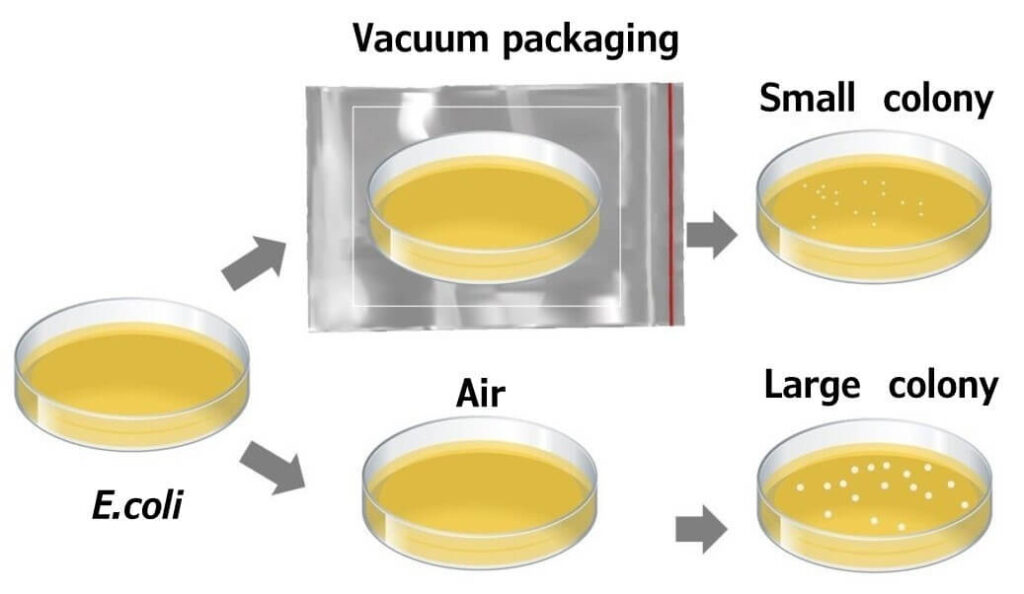
What is the Electron Transport Chain? A Simple Explanation of Aerobic and Anaerobic Respiration
With an understanding of what the glycolytic pathway and the citric acid cycle are, let's delve into the electron transport chain, aerobic (oxygen) respiration, and anaerobic respiration.
The electron transport chain (or respiratory chain) converts the hydrogen energy released in the citric acid cycle when acetic acid breaks down into carbon dioxide. This energy is transformed into ATP, our body's "currency" of energy.
In aerobic respiration, oxygen acts as the final acceptor of this hydrogen.
2H+ + 1/2 O2 → H2O
Note: While NAD is responsible for transporting the hydrogen released from the citric acid cycle, we won't delve deep into this to keep things simple.
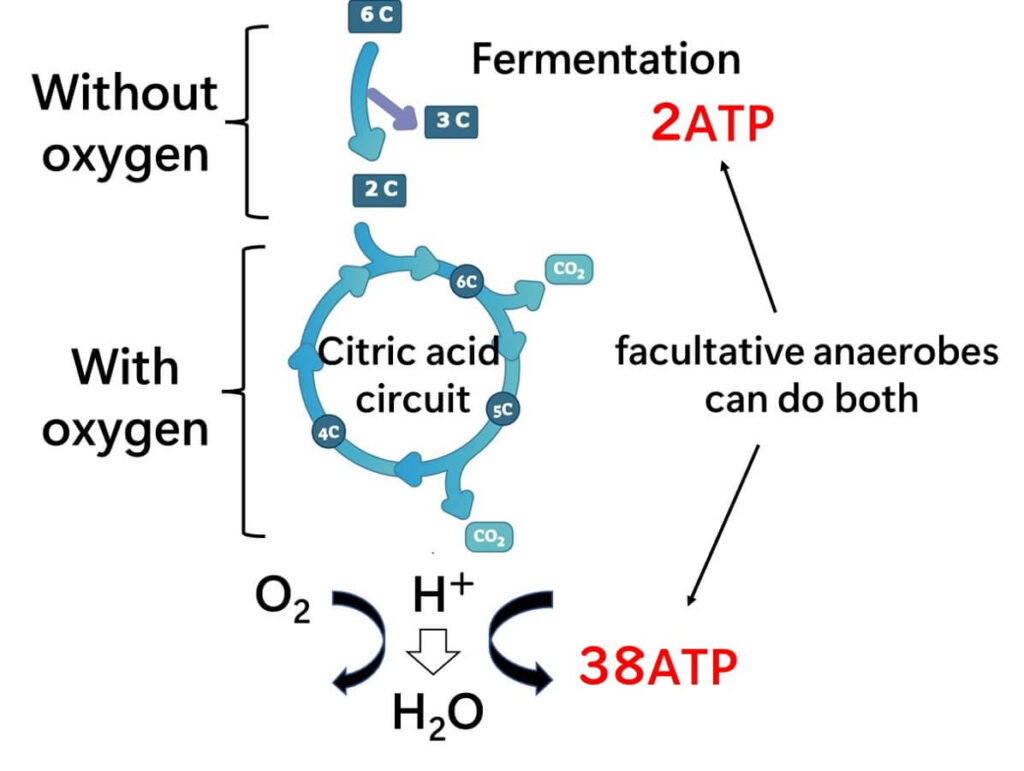
On the other hand, obligate anaerobes, commonly just called anaerobes, can't use oxygen and grow through anaerobic respiration. These bacteria possess similar biochemical pathways (like fermentation and the citric acid cycle) as aerobic bacteria. However, instead of oxygen, they use nitrate or sulfate as the final electron acceptors in their electron transport chain.
We usually think of respiration in terms of oxygen. But, in the microbial world, oxygen isn't the only end-acceptor for hydrogen from the citric acid cycle. For instance, sulfur ions or nitrate ions can play this role. When oxygen is the final acceptor, the end product is water. But when sulfur ions are the final acceptor, the end product is hydrogen sulfide.
SO4 2- +8e- + 10H+ →H2S+4H2O

Interestingly, in the evolutionary history of respiration, using sulfate ions as hydrogen acceptors predates the use of oxygen. To put this in perspective, if we imagine the entire history of life on Earth as one year, primitive bacteria first appeared on January 1st. Photosynthesizing bacteria, which contributed to the rise of oxygen on Earth, didn't emerge until early April. Before that, there was no oxygen on Earth. Thus, using oxygen in the citric acid cycle was a metabolic adaptation that only emerged once our planet was rich in oxygen.
The Role of Microbes in Matter Recycling within Ecosystems
Imagine a fish dying on the surface of a pond. Initially, aerobic bacteria like Pseudomonas thrive on the fish's surface. Pseudomonas plays a key role as decomposers within our planet's ecosystem. They reproduce rapidly when oxygen is available, but can't when it's not. As they begin to break down the fish, the oxygen within the decomposing fish gets depleted.
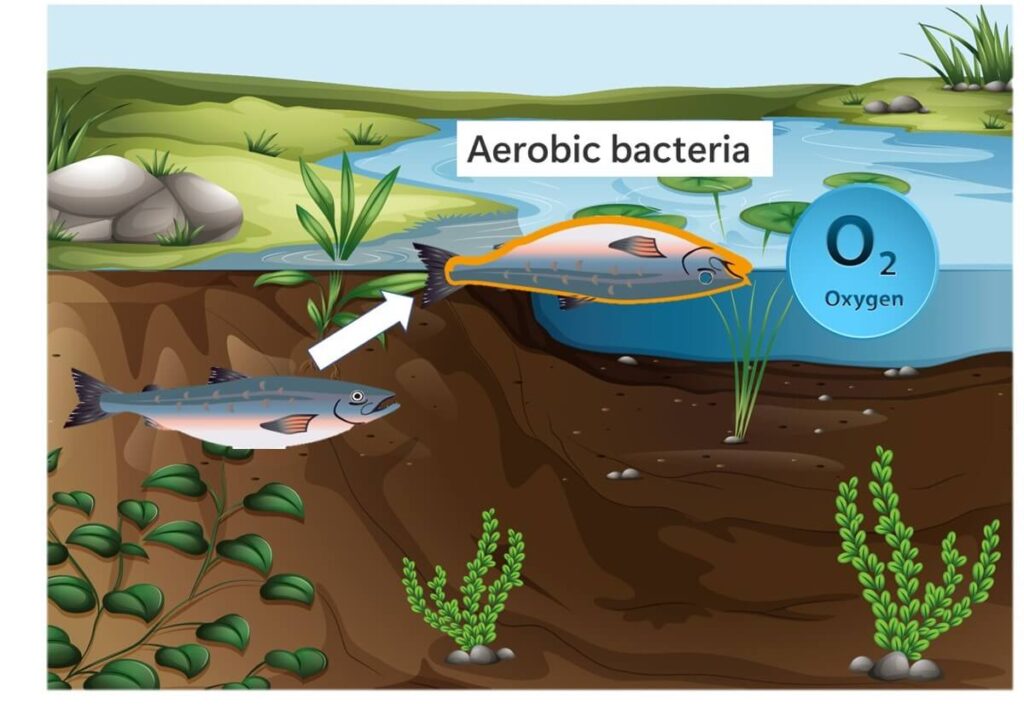
This is when facultative anaerobic bacteria come into play. These bacteria can reproduce actively using the citric acid cycle when oxygen is present. But, even in the absence of oxygen, they can still reproduce through fermentation pathways. However, a significant drawback of this fermentation process is that it cannot completely break down organic matter into carbon dioxide and water. Instead, a sugar molecule with six carbon atoms is broken down into organic acids or alcohols with only two or three carbon atoms. Yet, this system can't further degrade these products to carbon dioxide.
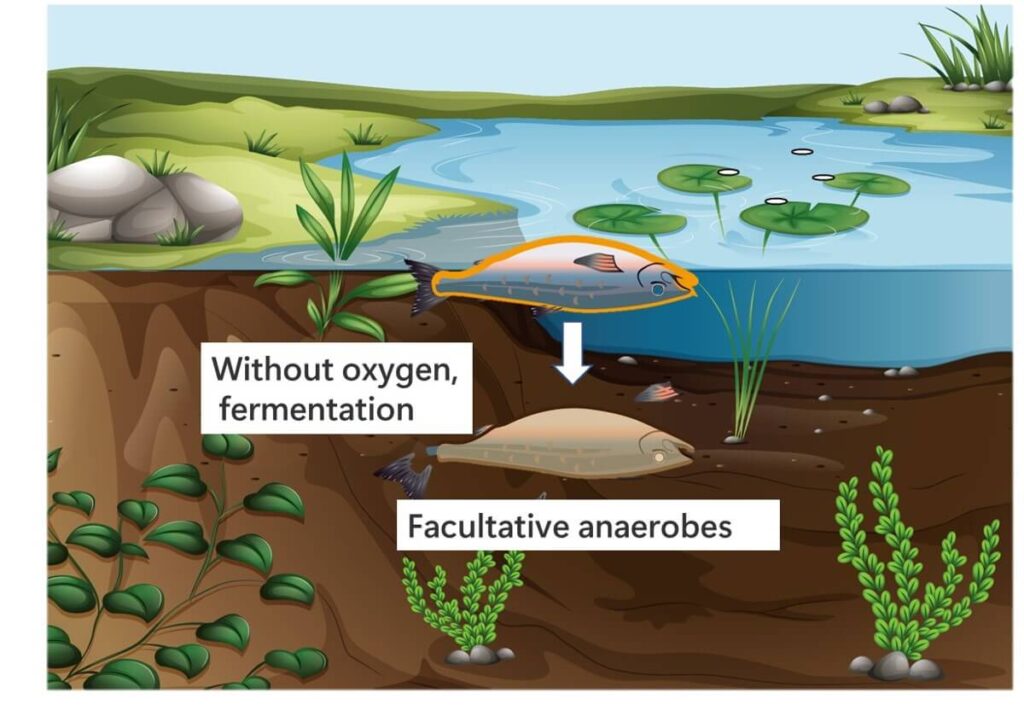
Imagine if only facultative anaerobes existed in nature. Organic acids would accumulate on Earth. When natural organisms like fish, birds, or vegetables decay, they would halt at a stage resembling fermented products, like yogurt or cheese. Our planet would essentially become a massive fermented food jar. For organic acids to be completely converted to inorganic substances like carbon dioxide and water in a natural ecosystem, the presence of strict anaerobic bacteria is crucial.
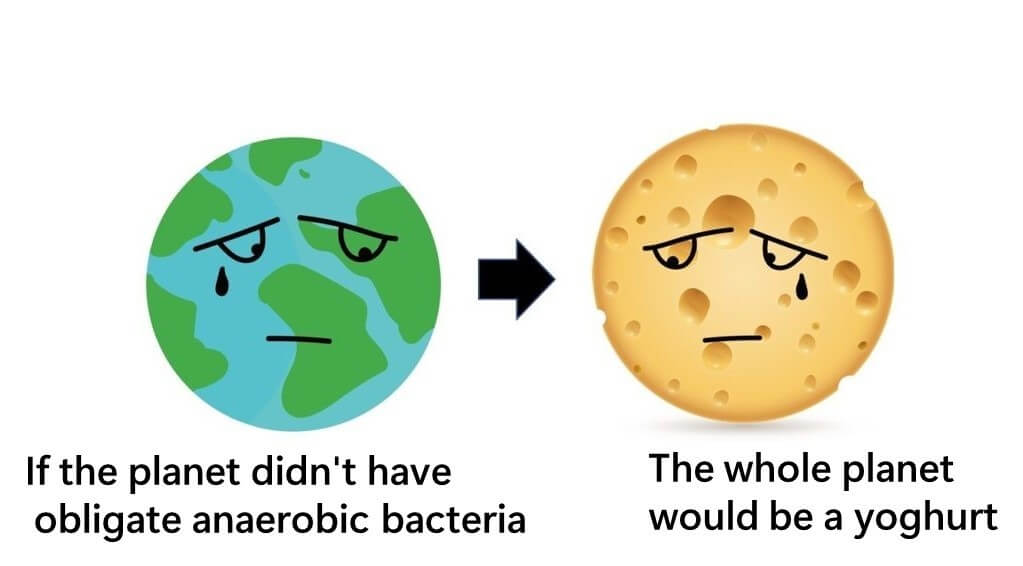
These bacteria can efficiently degrade organic compounds, such as organic acids and alcohols, to carbon dioxide and water, even without oxygen. They have a citric acid cycle similar to aerobic bacteria. But, unlike aerobes, they use sulfate or nitrate ions as a hydrogen receptor instead of oxygen. This means they can degrade organic matter to carbon dioxide as efficiently as aerobic bacteria, even without oxygen, all while obtaining a significant amount of energy.
From a food microbiology perspective, the botulinum bacterium is a notable example of a strict anaerobe. It's considered a significant threat in vacuum-sealed foods. Consequently, we tend to villainize these anaerobes. However, their presence is vital for the elemental recycling in the Earth's ecosystem. These bacteria, releasing bubbles of hydrogen sulfide gas – a final product of their anaerobic respiration – from sludges in dirty sewer drains, help in mineralizing the organic acids produced by the fermentation of facultative anaerobes.
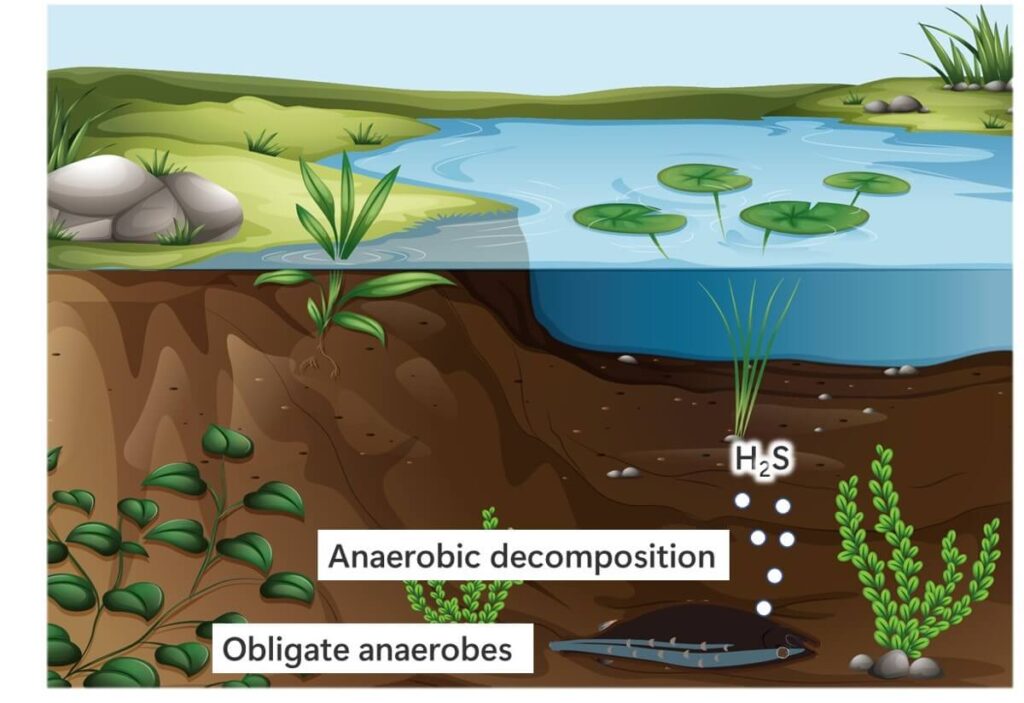
In conclusion, strict anaerobic bacteria are indispensable when viewed from the perspective of the global ecosystem's elemental cycling. It's essential to understand and appreciate the role of microbes in the broader context of Earth's ecology.

